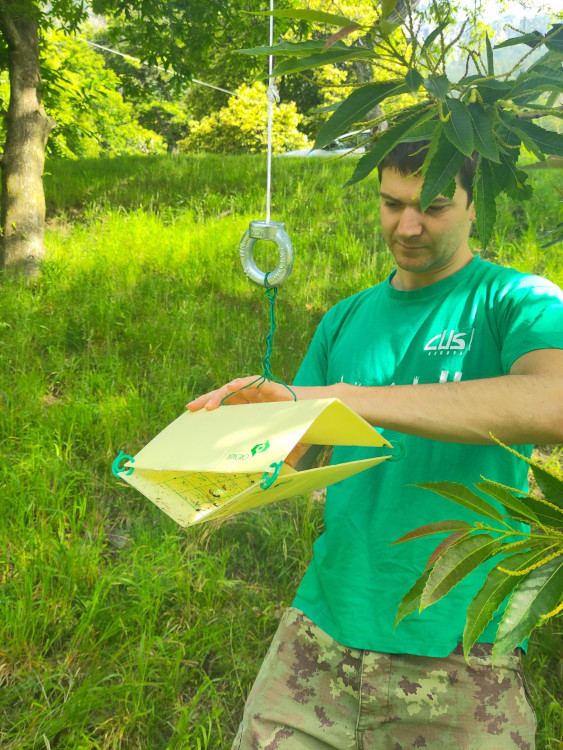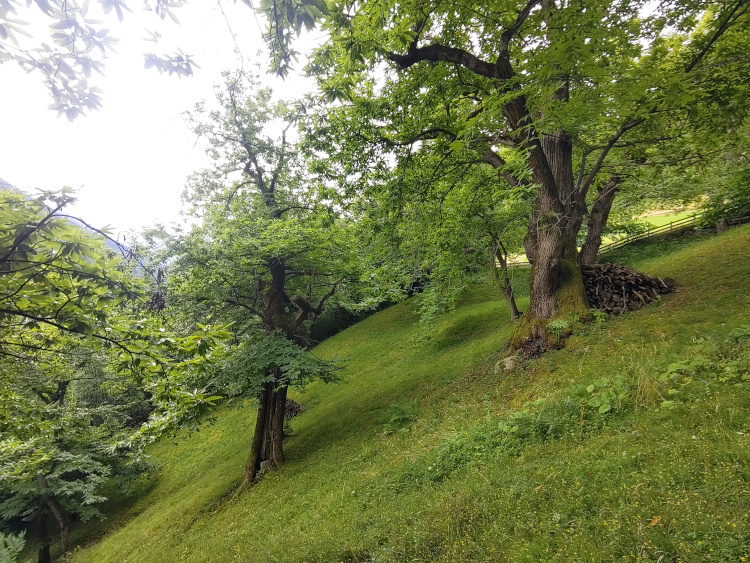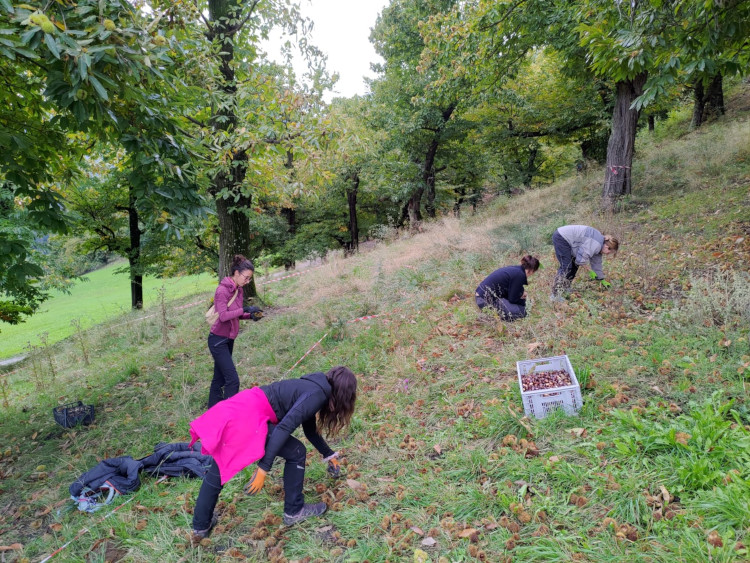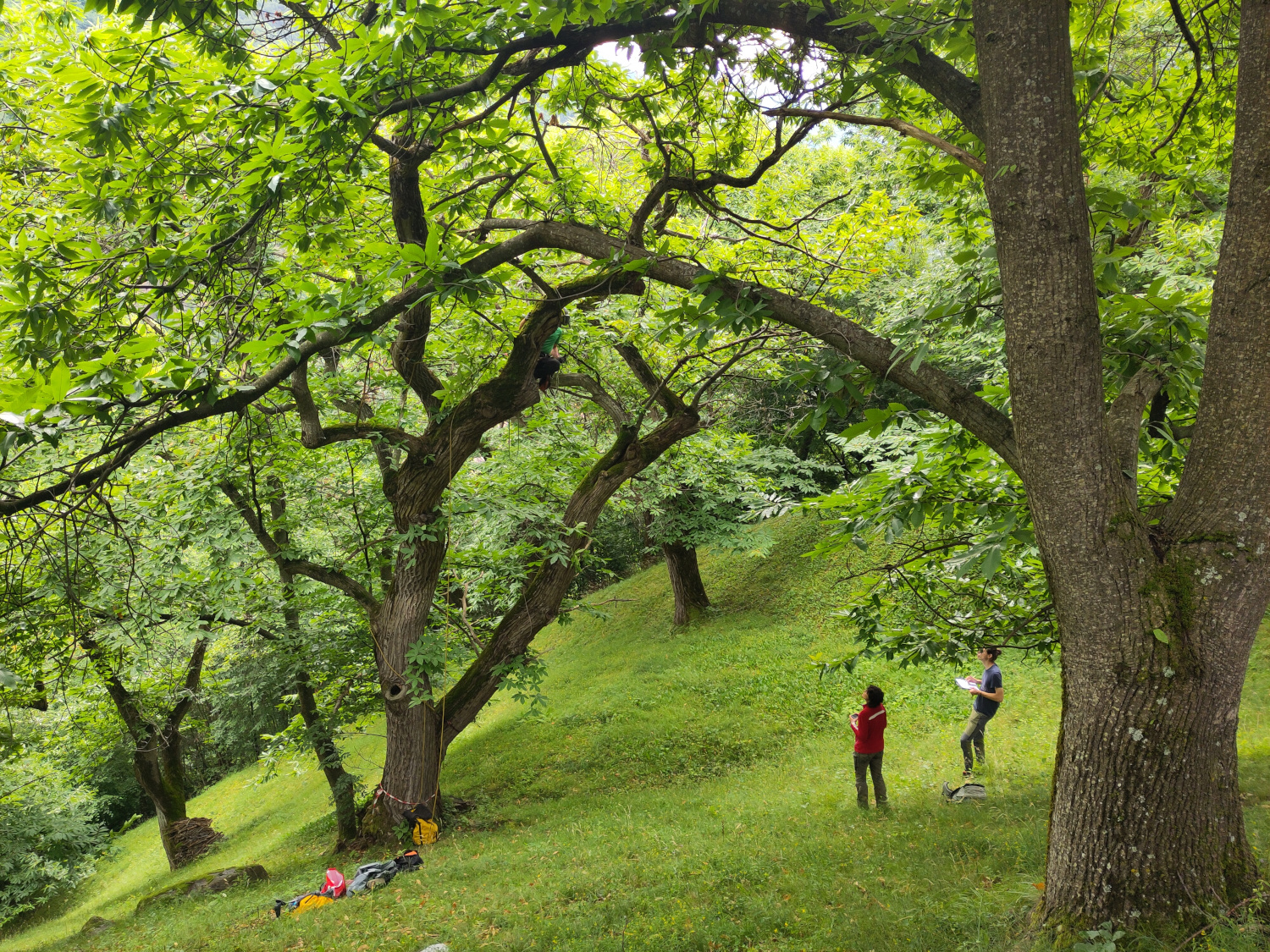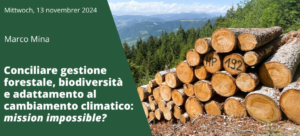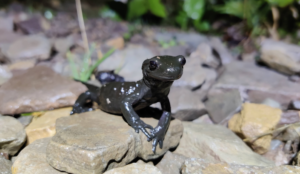Project description and objectives: Chestnut groves are extensive cultivated areas used to produce the sweet chestnut, the ‘Keschtn’ in South Tyrolean dialect. They are part of an aesthetic and valuable cultural landscape and can be found on many slopes of the main valleys in South Tyrol. Most of them were planted during the Austro-Hungarian monarchy as emergency rations in times of famine, but today they are the focus of many traditional events in autumn and the basis of the culinary delights of ‘Törggelen’. Chestnut groves are also a valuable habitat for many plant and animal species due to their extensive cultivation, but no systematic studies have yet been carried out on the biodiversity of these habitat in South Tyrol.
In order to get insight about the biodiversity of chestnut groves, the BMS team with the help of a set of partners conducted comprehensive surveys in chestnut groves. The investigation provides insights into the characteristic species communities of the habiat and analyses its importance for protected species. Additionally, a study on three pest species aims to understand the role of bats and birds as a biological control for these species.
The activities go hand in hand with the initiative Baumgart, which tries to raise awareness for the high value of orchard meadows and chestnut groves. In 2024, Baumgart had a special focus on chestnut groves, organizing a competition selecting the most valuable chestnut grove in South Tyrol.
Methods: In 2024 we surveyed five chestnut orchards. These are located in Tschars, Völlan, Grissian and Kohlern and in Feldthurns. On these sites we carried out the standard BMS survey programme: we surveyed birds and bats, butterflies, grasshoppers, vascular plants and various soil invertebrates. In addition, we carried out a survey of mature trees with a professional tree-climber to locate bat roosts in trees. (In the Eisack/Isarco valley), another focus was the detection of the protected beetle species Osmoderma emerita, which is also dependent on old broadleaved trees. In collaboration with the Fondazione Edmund Mach in Trentino, we are studying the infestation and phenology of the beech moth (Cydia fagiglandana), the chestnut tortrix (Cydia splendana) and the chestnut leafroller (Pammene fasciana), three pest moths that damage chestnut crops. This study, which will also be carried out in five additional chestnut groves in Trentino, should provide information on the predator-supressor relationship with the bats and birds present at the sites. 2025 we will continue the study in five more chestnut orchards in South Tyrol.
Partners: Baumgart Initiative, Fondazione Edmund Mach, Office for Nature of the Autonomous Province of Bolzano – South Tyrol and Naturmuseum Südtirol (SpeciesMonitoring Project)
Contact: Hanna Steigleder: Hanna.Steigleder@eurac.edu and Chiara Paniccia: Chiara.Paniccia@eurac.edu
